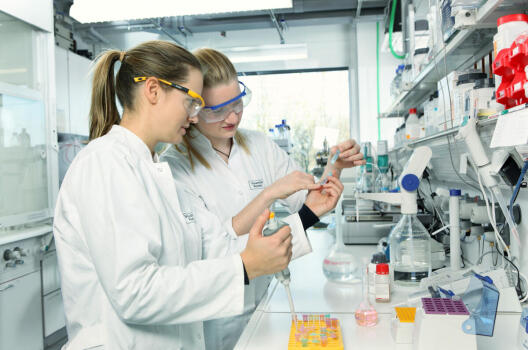Junior Researchers Group – “Mechanistic Understanding”
Profile:
- Name: Mechanistic Understanding
- Funding code/competition: 03XP0231
- Funding source: Federal Ministry of Education and Research (BMBF)
- Project duration: October 2019 to October 2024
- Funding volume: 1.5 million euros
Focus Applied Electrochemistry
The energy turnaround will not be possible without high-performance energy storage systems. This means not only that such systems will have to be developed, but also that the potential of existing technologies – such as the lithium-ion battery – will need to be exploited to the full, with restricting factors being eliminated or replaced. To this end, every process and reaction in the battery has to be understood down to the last detail. This is what our group of junior researchers, working under the title of “Mechanistic Understanding”, are engaged on at MEET Battery Research Center.
Focusing on applied electrochemistry, our team concentrates on understanding and controlling charge transfer reactions and redox reactions, because these have a decisive influence on a battery’s performance and are therefore a key factor in optimizing lithium-ion technology. With this focus in their work and the results they have so far achieved, our researchers are pioneering the further development of lithium-ion batteries. By specializing in the analysis of the interactions between atoms which take place in redox reactions, the team members gain insights into a field of research which has not been much investigated so far – but which is rich in potential.

Overcoming Barriers Through New Operando Analytical Methods
Comprehensive, complicated analytical methods are needed to measure the difficult-to-measure changes that take place in atoms and their bonding during redox reactions. This is the challenge that our junior researchers have taken up. In order to overcome analytical barriers, the researchers are constantly developing new, complex characterization techniques and evaluation methods such as are necessary, for example, for X-ray absorption spectroscopy in the area of soft X-rays. Up to now, ultra-high vacuum has been required for this. This, and other new developments, as well as methodological adjustments especially for batteries – which are complex research objects – enable the researchers to study energy storage operando, i.e. during use, and carry out detailed measurements. Through a combination of approaches – both of a sound theoretical nature and, at the same time, innovatively experimental – our researchers gain unique insights into redox reactions and the associated structural changes in lithium-ion batteries. In doing so, they benefit from MEET’s ultra-modern laboratories.
Our researchers also modify existing materials, and develop new ones, for lithium-ion batteries. In doing so, they concentrate for example on the anionic doping of layered oxides. Replacing the oxygen with minute quantities of anions gives them an opportunity to specifically modify the electronic character of materials and, as a result, significantly increase the efficiency of the battery. Something that our junior researchers also have on their agenda is a theoretical analysis of the interaction between individual cell components. In this connection, they focus for example on so-called electrode-balancing, which is this interaction between the cell components and which can be disturbed during battery operation – for example by high currents, temperatures over 40 degrees Celsius and below zero degrees, by long operation times or by rapid charging. This, in turn, can lead to massive drops in performance, and even safety risks.
Trendsetting Analysis of Redox Reactions
By taking an holistic approach, our research team has already set new standards in battery research. The team was the first to demonstrate experimentally that redox reactions in the cathode consisting of lithium-nickel-cobalt-manganese (NCM) are based on a reversible oxidation of nickel and on a hybridization with oxygen. In doing so, they have identified an understanding of redox reactions and the interactions associated with them as a major factor in improving the lithium-ion battery. Up to now, transition metal and oxygen were mostly considered separately. In order for the electron content of the transition metal to remain constant, however, the metal accesses electrons in the oxygen. As a result, a hybridization of transition metal and oxygen takes place. What our team of junior researchers now aim to do is to replace the oxygen with atoms which can release increasing quantities of electrons to the transition metal – and thus exchange more charge. The performance of the lithium-ion battery can be increased decisively in this way.

